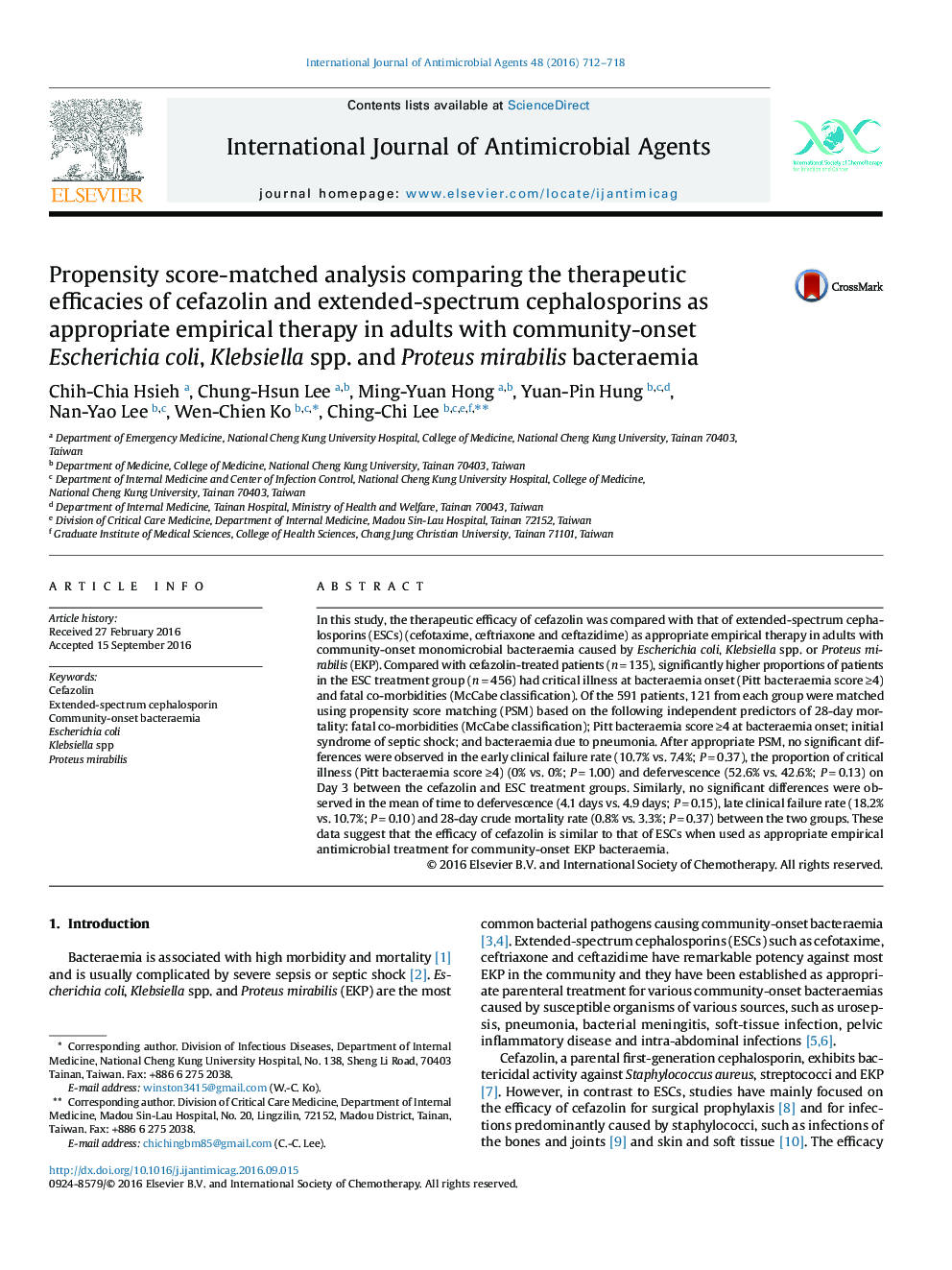| کد مقاله | کد نشریه | سال انتشار | مقاله انگلیسی | نسخه تمام متن |
|---|---|---|---|---|
| 5666865 | 1591748 | 2016 | 7 صفحه PDF | دانلود رایگان |

- E.âcoli, Klebsiella spp. and P.âmirabilis (EKP) are the main bacteria causing community-onset bacteraemia.
- PSM analysis was used to control for differences in baseline characteristics independently associated with crude mortality.
- Cefazolin is as effective as extended-spectrum cephalosporins for empirical treatment of community-onset EKP bacteraemia.
- Cefazolin can be used as an economic, broad-spectrum cephalosporin-sparing antibiotic for community-onset bacteraemia.
In this study, the therapeutic efficacy of cefazolin was compared with that of extended-spectrum cephalosporins (ESCs) (cefotaxime, ceftriaxone and ceftazidime) as appropriate empirical therapy in adults with community-onset monomicrobial bacteraemia caused by Escherichia coli, Klebsiella spp. or Proteus mirabilis (EKP). Compared with cefazolin-treated patients (nâ=â135), significantly higher proportions of patients in the ESC treatment group (nâ=â456) had critical illness at bacteraemia onset (Pitt bacteraemia score â¥4) and fatal co-morbidities (McCabe classification). Of the 591 patients, 121 from each group were matched using propensity score matching (PSM) based on the following independent predictors of 28-day mortality: fatal co-morbidities (McCabe classification); Pitt bacteraemia score â¥4 at bacteraemia onset; initial syndrome of septic shock; and bacteraemia due to pneumonia. After appropriate PSM, no significant differences were observed in the early clinical failure rate (10.7% vs. 7.4%; Pâ=â0.37), the proportion of critical illness (Pitt bacteraemia score â¥4) (0% vs. 0%; Pâ=â1.00) and defervescence (52.6% vs. 42.6%; Pâ=â0.13) on Day 3 between the cefazolin and ESC treatment groups. Similarly, no significant differences were observed in the mean of time to defervescence (4.1 days vs. 4.9 days; Pâ=â0.15), late clinical failure rate (18.2% vs. 10.7%; Pâ=â0.10) and 28-day crude mortality rate (0.8% vs. 3.3%; Pâ=â0.37) between the two groups. These data suggest that the efficacy of cefazolin is similar to that of ESCs when used as appropriate empirical antimicrobial treatment for community-onset EKP bacteraemia.
Journal: International Journal of Antimicrobial Agents - Volume 48, Issue 6, December 2016, Pages 712-718